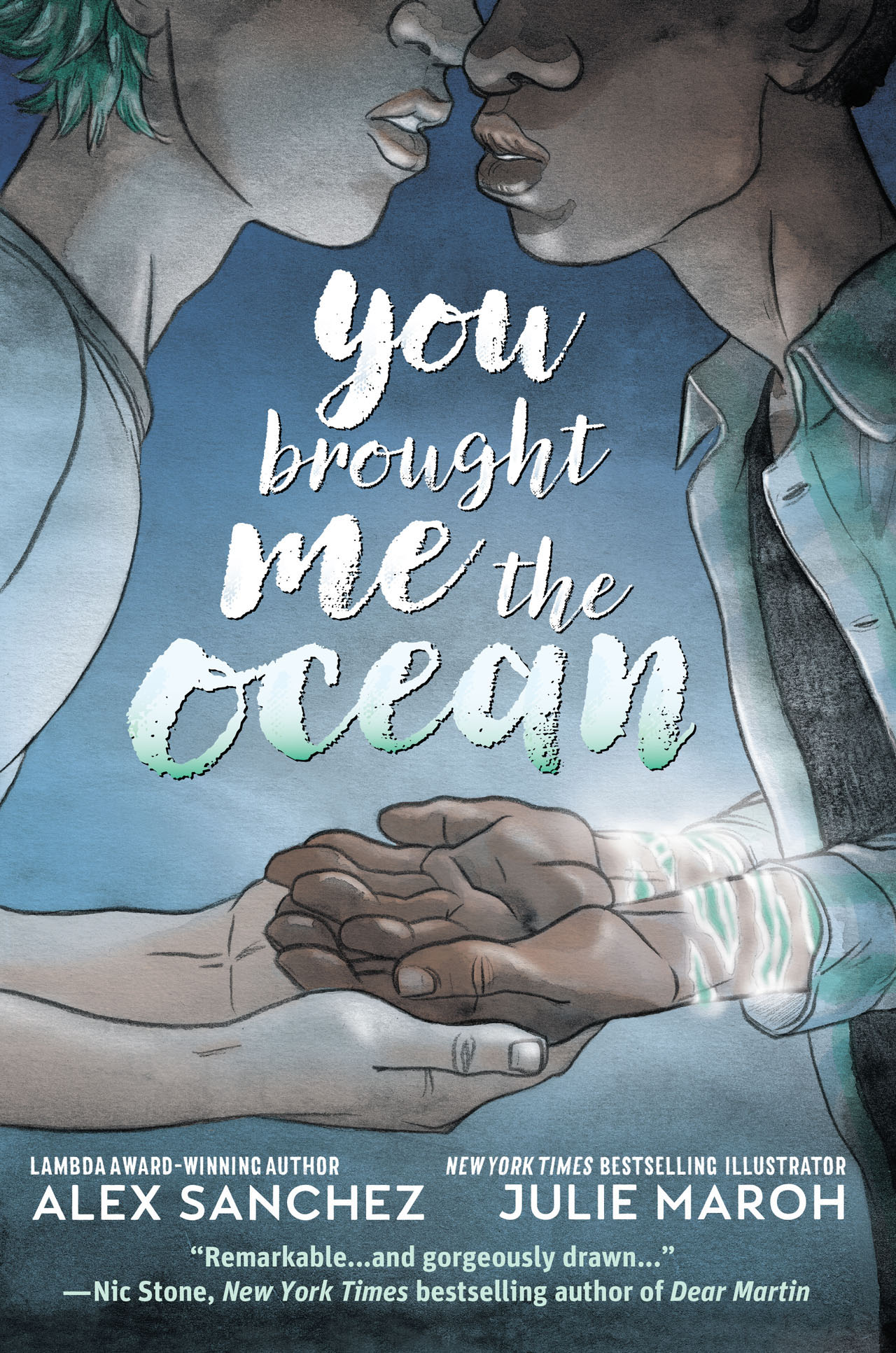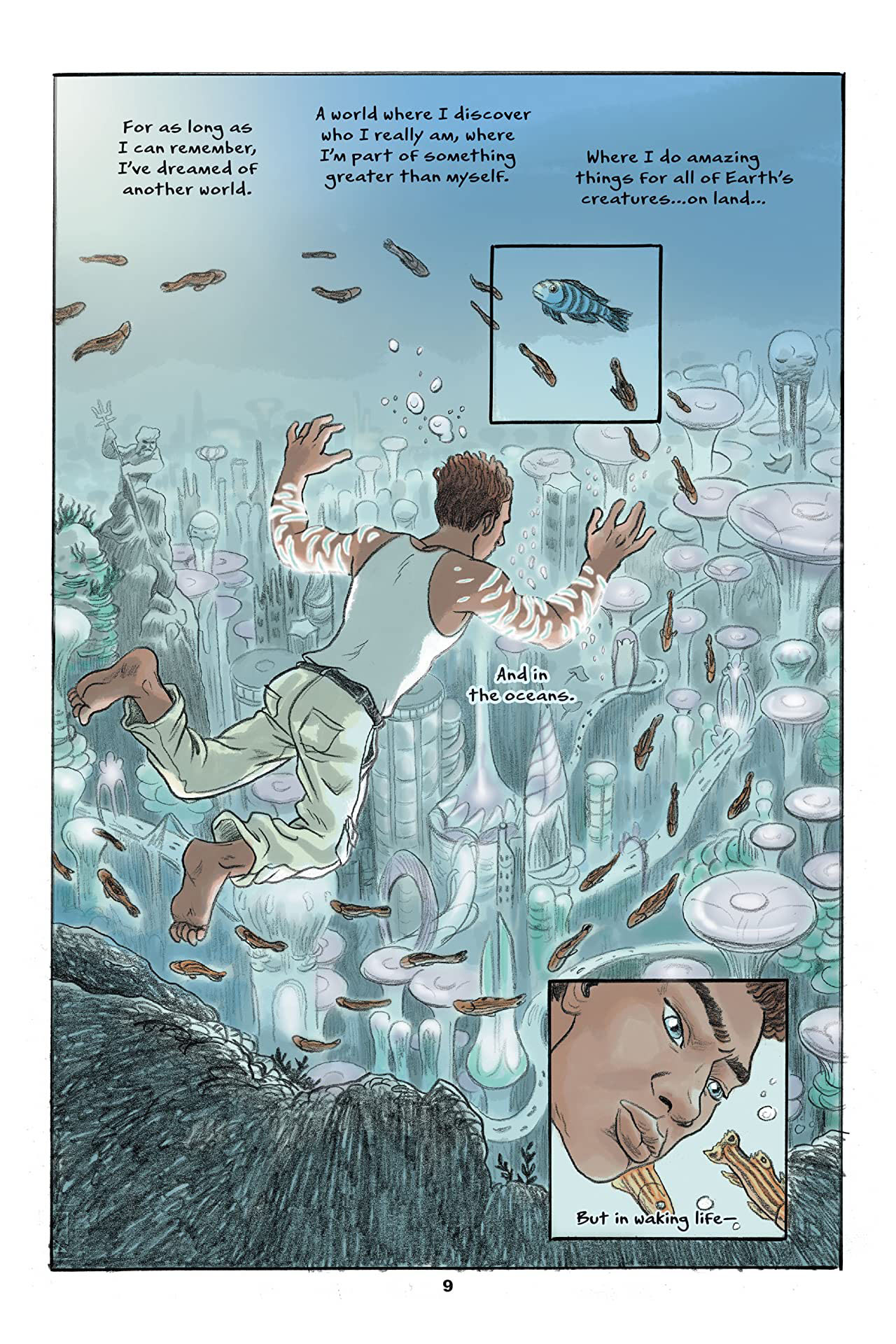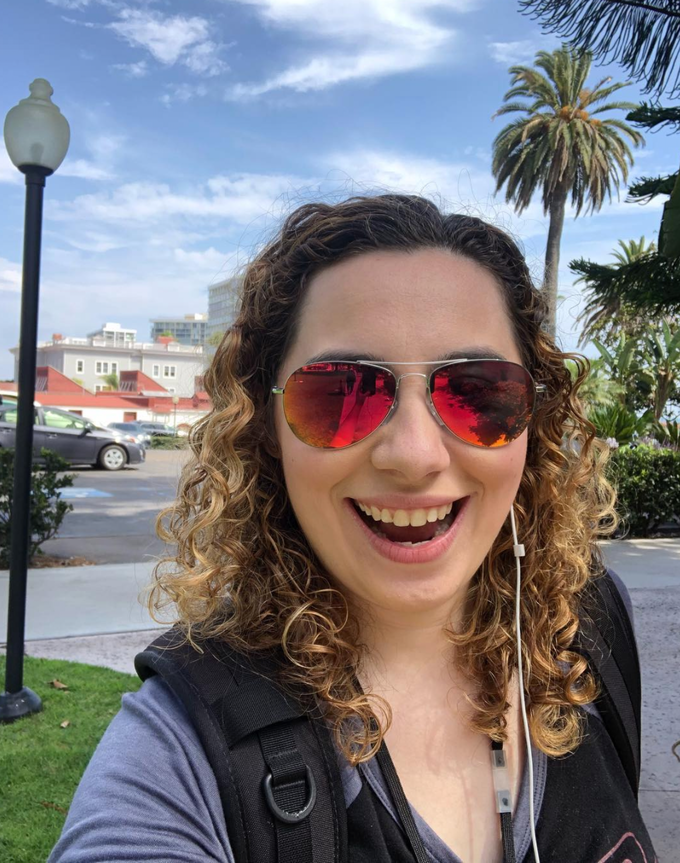DC's You Brought Me To The Ocean explores a superhero coming out story
Author of the Rainbow Boys takes us inside Aqualad's world

Spoilers for You Brought Me To The Ocean ahead.
Alex Sanchez, author of the prose novel series Rainbow Boys, re-imagined the origin story of DC's Aqualad - a.k.a. Jackson Hyde - in the recently-released original graphic novel You Brought Me To The Ocean.
Once a sidekick of Aquaman, Aqualad is reimagined here by Sanchez and artist Julie Maroh in his own story, with his own agency and identity.
With the book now on shelves and in peoples hands (and less of a fear of spoiling people about the book), Newsarama spoke with Sanchez about this superhero story of a man's coming out: what Sanchez put into it, what he hopes readers will get out of it, and how it all fits within the broader DC tapestry.

You Brought Me To The Ocean has already hit comic book stands, and Newsarama was lucky enough to have a spoiler filled conversation with writer, Alex Sanchez, about the book. We discussed Jake’s coming out process, the queer metaphors in superhero comic books, and if Sanchez has plans to work on more DC projects in the future.
Newsarama: To jump right in, Alex, what made you decide to set You Brought Me To The Ocean in a small town and how did you want this to affect Jake’s coming out journey?
Alex Sanchez: From the start, DC encouraged me to pick and choose elements from previous versions of Aqualad and feel free to make the story my own. In the 'Jackson Hyde' incarnation of Aqualad, he escapes Black Manta and grows up in the small town of Silver City, New Mexico. I liked the idea of a teen with powers over water growing up in one of the driest places in the U.S., far from the ocean. And I thought the small-town setting raised the stakes for Jake’s superpowers being discovered. But as the story emerged, I thought the themes of truth and honesty would resonate even more by setting Jake’s story in a different New Mexico small town, Truth or Consequences.
Get the best comic news, insights, opinions, analysis and more!

Nrama: You reveal pretty early on that Maria (Jake’s best friend) has a crush on Jake, all while Jake begins to figure out how to start coming out to himself and the people around him. What went into building the dynamic between Maria and Jake?
Sanchez: I drew upon my own experiences growing up queer, and what it felt like to be friends with and also romantically attracted to both boys and girls. It was a lot to sort out. For me, like for so many queer people, sexuality and romantic attraction aren’t binaries — they’re part of a spectrum that’s fluid, like water. That became part of Jake’s struggle in his relationships with Maria and Kenny.
Nrama: One of my favorite scenes of the graphic novel is when Jake tells Maria his secret, but not about his queerness but his powers. What parallels did you want to play with as Jake figures out his sexuality and his own power set?
Sanchez: I think queer people often identify with superheroes as metaphors for queerness. Just like superheroes, many LGBTQ+ people grow up having to keep our true identity secret and live a double life. And we have a supervillain to fear: homophobia and prejudice.
For me to have revealed who I truly was while growing up would’ve exposed me to real danger — name-calling, bullying, and very possibly violence. But just like superheroes, when we are able to finally express our secret identity, that unbridles our own unique and special superpower: to be true to who we are!

Nrama: Why do you think it was important that this wasn’t simply a superhero story?
Sanchez: It makes an iconic superhero more real, more multi-dimensional, and therefore more powerful in a reader’s imagination. The DC editors encouraged me to really flesh out the characters by focusing on the emotional core of the story. In Jake’s case, that includes being forced to deal with his sexuality, coming out, friendships, crushes, and bullying.
Nrama: Many people know Aqualad from the Young Justice cartoon, where he’s also queer. Are there other elements from that show you wanted to add into this story?
Sanchez: The element that immediately comes to mind are the markings on Aqualad’s arms. I thought they looked so cool, but I wondered what it would feel like emotionally for a teen to have markings like that, and not know what they were, and feel embarrassed about other people seeing them. The markings add to Jake’s confusion about feeling different, like a fish out of water. I loved writing a superhero story that focuses on real-life challenges a teenage superhero might face.

Nrama: What made you want to work with DC on this story?
Sanchez: The idea of contributing to a universe of icons — Superman, Batman, Wonder Woman, Aquaman.
Also, the challenge of writing my first graphic novel excited me. And the privilege of working with Julie Maroh, the amazing illustrator of Blue is the Warmest Color, was a phenomenal opportunity.
Nrama: Any plans for a sequel?
Sanchez: Nothing is definite yet, but I would love to work on a continuation of Jake’s story in a sequel, and maybe even a series.
Nrama: Would you like to have Atlantis more involved if you do another story?
Sanchez: I would LOVE to involve Atlantis! One of my favorite sports as a teen was scuba diving, and it rocks my imagination to think what it would be like to actually visit an underwater city-state.
Nrama: What other DC characters would you like to work on with the same graphic novel treatment?
Sanchez: Any of them! If I had to choose, I guess my first choice would be Aquaman. I would love to explore what being a teen was like for him, especially since he’ll eventually meet up with Aqualad. I would love to explore the similarities and differences of these two heroes with aquatic powers who come from very different backgrounds. I would also love to explore Black Manta as a teen, and how he became a super villain! There are so many stories to write!
Kat has been working in the comic book industry as a critic for over a decade with her YouTube channel, Comic Uno. She’s been writing for Newsarama since 2017 and also currently writes for DC Comics’ DC Universe - bylines include IGN, Fandom, and TV Guide. She writes her own comics with her titles Like Father, Like Daughter and They Call Her…The Dancer. Calamia has a Bachelor’s degree in Communications and minor in Journalism through Marymount Manhattan and a MFA in Writing and Producing Television from LIU Brooklyn.



